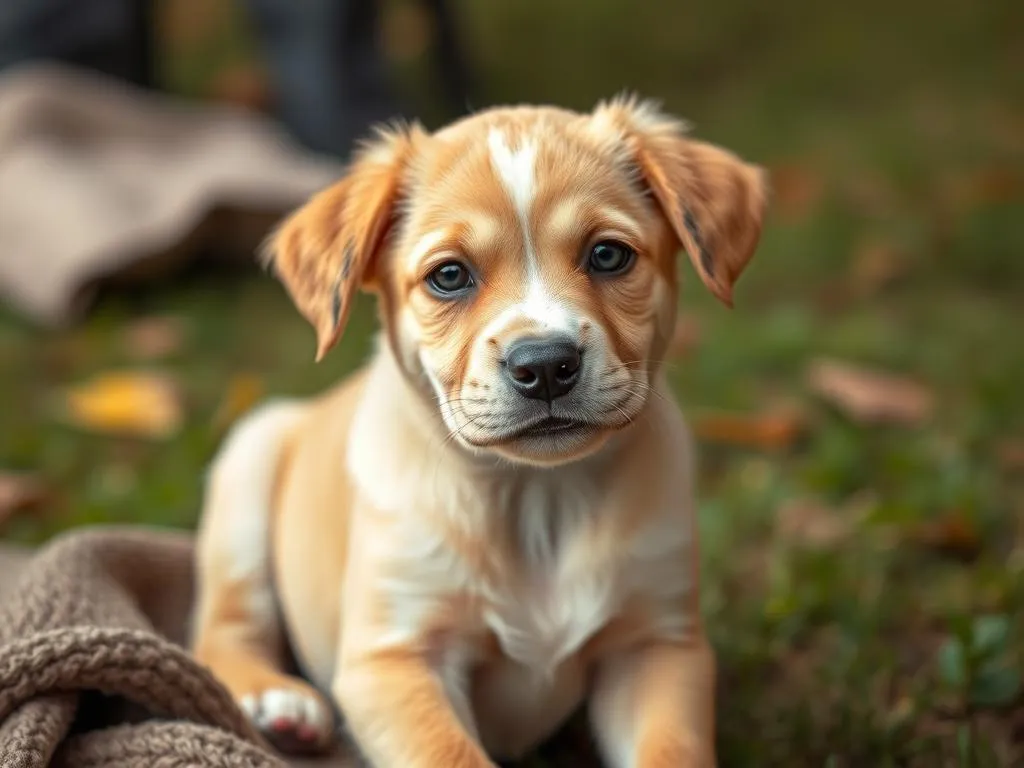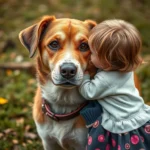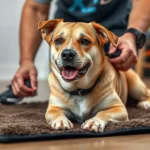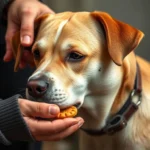
Introduction
Training your 2-month-old puppy is one of the most important responsibilities you will encounter as a pet owner. Early training lays a strong foundation for your puppy’s future behavior and social skills. It’s during this crucial period that puppies are most impressionable; hence, the benefits of starting training early are numerous. From socialization to behavior management, a well-trained puppy will not only be a joy to have around but will also help you avoid many common issues that arise later in life.
In this article, we will delve into effective techniques, valuable tips, and the common challenges faced when training a 2-month-old puppy. By the end, you’ll be equipped with the knowledge to start your puppy on the right path.
Understanding Your 2-Month-Old Puppy
Developmental Stage
At 2 months old, puppies are typically full of energy and curiosity. They are at a stage where they explore their environment and learn about their new world. Key characteristics of this age include:
- High energy levels: Puppies are playful and eager to interact.
- Curiosity: They will investigate everything, which can lead to both positive and negative experiences.
- Bonding: This is a prime time for forming bonds with their human family members.
Understanding your puppy’s behavior is crucial. At this age, they may exhibit behaviors such as chewing, barking, and even some nipping, which are all normal parts of their development.
Learning Capacity
Puppies are incredible learners, especially during their early months. They absorb information like sponges and learn best through experiences. Positive reinforcement is key at this stage; it promotes a trusting relationship between you and your puppy. Puppies respond well to praise, treats, and playtime, making training a fun and engaging experience.
Basic Training Principles
Positive Reinforcement
Positive reinforcement involves rewarding your puppy for good behavior rather than punishing them for bad behavior. This technique helps reinforce desired actions. For example, if your puppy sits on command, rewarding them with a treat or praise encourages them to repeat the action. This method works exceptionally well for puppies as it builds their confidence and strengthens the bond with their owners.
Consistency and Routine
Establishing a regular training schedule is essential for effective learning. Consistency helps your puppy understand what is expected of them. Aim for short training sessions, around 5 to 10 minutes, several times a day. This helps maintain your puppy’s attention. Create a routine that includes specific times for training, meals, play, and bathroom breaks to help your puppy feel secure and understand their environment.
Patience and Realistic Expectations
Training takes time, especially with a 2-month-old puppy. It’s essential to set realistic goals and be patient. Puppies have short attention spans and may not grasp commands immediately. Celebrate small victories, and remember that repetition is key.
Essential Commands for a 2-Month-Old Puppy
Sit
Teaching your puppy to “sit” is one of the simplest commands and serves as a foundation for other training:
- Hold a treat close to your puppy’s nose.
- Move your hand upwards, allowing your puppy’s head to follow the treat, which will cause their bottom to lower.
- Once in a sitting position, say “sit” and give them the treat.
- Repeat this several times until your puppy consistently sits on command.
Common Mistakes to Avoid:
– Don’t force your puppy into a sitting position.
– Avoid giving treats without the command; this can confuse your puppy.
Stay
The “stay” command is crucial for keeping your puppy safe. Here’s how to train it:
- First, ask your puppy to sit.
- Open your palm in front of you and say “stay.”
- Take a few steps back. If your puppy stays, return and reward them with a treat.
- Gradually increase the distance and duration before rewarding.
Tips for Increasing Duration and Distance:
– Use a release word, such as “okay,” to let your puppy know they can move.
– Start with short durations and gradually extend the time as they learn.
Come
Teaching your puppy to “come” can be a lifesaver in emergencies. Here’s how to do it:
- Call your puppy’s name followed by “come” in a happy tone.
- Use a treat to entice them to come to you.
- When they reach you, reward them immediately with praise and treats.
Importance of Recall Training for Safety:
– This command can help prevent dangerous situations, such as running into traffic or getting lost.
Leash Training
Introducing your puppy to leash training is essential for enjoyable walks. Here are some tips:
- Start indoors or in a secure area. Let them get used to wearing a collar and leash.
- Use treats to encourage them to walk beside you.
- If they pull, stop walking and wait for them to return to your side before continuing.
Best Practices for Successful Walks:
– Keep walks short and positive to maintain their interest.
– Gradually increase the length of walks as your puppy gets used to being on a leash.
Socialization Techniques
Importance of Socialization
Socialization is crucial for a 2-month-old puppy. This is the time when they learn to interact with various people, pets, and environments. Proper socialization can help prevent behavioral issues like fearfulness and aggression later in life.
Exposure to Different Environments
Introduce your puppy to new places and experiences. Here are some tips:
- Take them to different environments, such as parks, pet stores, and other safe public places.
- Expose them to various sounds, smells, and surfaces (e.g., grass, gravel).
- Ensure these experiences are positive by bringing treats and offering praise.
Puppy Playdates
Arranging playdates with other puppies can be incredibly beneficial. It helps them learn proper social cues and bite inhibition. Here’s how to arrange safe playdates:
- Choose vaccinated puppies of similar sizes and temperaments.
- Supervise all interactions to ensure safety.
- Provide breaks during playtime to prevent overstimulation.
Common Challenges in Puppy Training
Attention Span
Managing a young puppy’s short attention span can be challenging. Keep training sessions brief, engaging, and varied. Use different commands and activities to hold their interest.
House Training
Effective house training is essential for a well-behaved puppy. Here are some tips:
- Take your puppy outside frequently, especially after meals, playtime, and naps.
- Praise and reward them when they go in the designated area.
- Recognize signs that your puppy needs to go outside, such as sniffing, whining, or circling.
Chewing and Biting
Puppies chew and bite as part of their exploration and teething process. Understanding why this happens can help you redirect these behaviors. Here are some strategies:
- Provide appropriate chew toys to satisfy their need to chew.
- When they bite, redirect them to a toy and praise them for chewing on it.
- Avoid using your hands or feet as toys to prevent encouraging biting.
Tools and Resources for Training
Training Supplies
Having the right training supplies can make a big difference. Essential items include:
- Leashes and collars: Choose one that fits comfortably.
- Treats: Use small, tasty treats to reward your puppy.
- Toys: Interactive toys can keep your puppy engaged during training.
Online Resources and Apps
There are various online resources and training apps that can provide additional guidance and techniques. Look for reputable sites that offer videos and tutorials specifically for training puppies.
Professional Training Classes
Enrolling your puppy in a training class can be beneficial. Look for classes that focus on positive reinforcement and socialization. Benefits of professional classes include:
- Structured learning environments.
- Exposure to other puppies and owners.
- Guidance from experienced trainers on handling common issues.
Maintaining Progress and Building on Skills
Reinforcement of Learned Commands
Reinforcing learned commands is vital for long-term success. Regular practice helps solidify the commands in your puppy’s memory. Use everyday situations to reinforce commands, such as asking them to sit before meals or stay before going out the door.
Gradual Introduction of Advanced Commands
Once your puppy has mastered basic commands, you can gradually introduce more complex commands. Consider teaching tricks or tasks that challenge their mind, such as “roll over” or “shake hands.” This not only keeps training interesting but also builds confidence.
Ongoing Socialization
Socialization shouldn’t stop once your puppy reaches a certain age. Continue to expose them to various experiences as they grow. Regular trips to the dog park, encounters with different animals, and interactions with people of all ages can help your puppy become a well-adjusted adult dog.
Conclusion
Early training and socialization are crucial for a happy and well-behaved 2-month-old puppy. By implementing positive reinforcement, consistency, and patience, you can set your puppy up for a successful future. Remember, each puppy is different, and training will take time and effort. Celebrate small successes and remain committed to their development. With your guidance, your puppy will grow into a loving and well-mannered companion. Start your training journey today, and enjoy the rewarding experience of raising a well-trained puppy!









